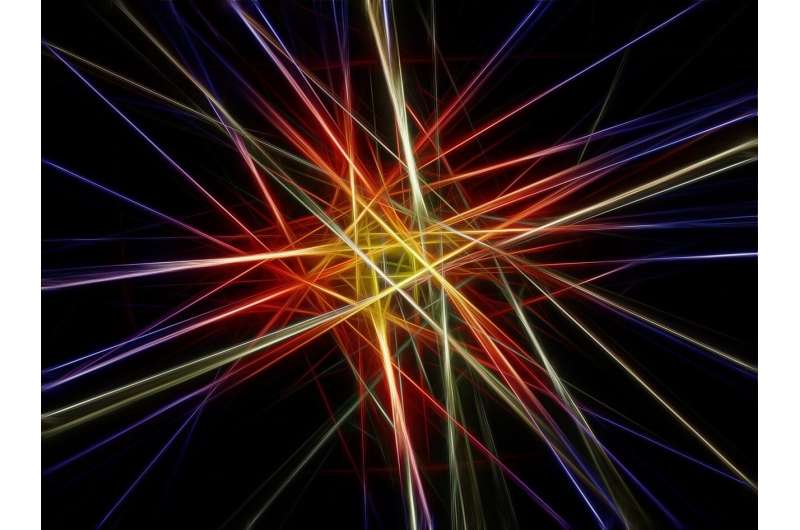Credit: CC0 Public Domain
The interaction between lasers and matter is at the forefront of new investigations into fundamental physics as well as forming a potential bedrock for new technological innovations. One of the initiatives spearheading this investigation is the Extreme Light Infrastructure Nuclear Physics (ELI-NP) project. Here the project's High-Power Laser System (HPLS)—the world's most powerful laser—is just one of the tools driving electron acceleration with lasers, Direct Laser Acceleration (DLA). In a new paper published in EPJ D, Etele Molnar, ELI-NP, Bucharest, and co-authors study and review the characteristics of electron acceleration in a vacuum caused by the highest-power laser pulses achievable today looking for the key to maximum net energy gain.
In particular, the authors calculate the optimal values of the laser beam required to achieve maximum electron energy for different laser power levels. They observe that tuning certain aspects of a laser such as its beam waist—the point at which a laser beam has its minimum radius—can favorably increase the maximum acceleration of electrons in a vacuum for both linearly and circularly polarized lasers.
As may be expected, Molnar and colleagues find that the net energy of the electrons, and thus their acceleration, is raised with increased laser power for beams with optimal beam waists. The paper describes an average energy gain in electrons of a few MeV in full pulse interactions, in which the highest energy electrons possess is roughly 160 MeV. In other cases such as half-pulse interactions, however, the authors say that these energy gains are almost an order of magnitude greater—reaching up to 1 GeV.
In terms of future research, the paper puts forward other potential directions. For example, the researchers suggest a study with a focus on direct laser acceleration with higher Laguerre Gaussian modes—circularly symmetric beam profiles or lasers with cavities that are cylindrically symmetric—should follow the current paper.
More information: Etele Molnár et al, Optimizing direct laser-driven electron acceleration and energy gain at ELI-NP, The European Physical Journal D (2020). DOI: 10.1140/epjd/e2020-10423-x
Journal information: European Physical Journal D
Provided by Springer























